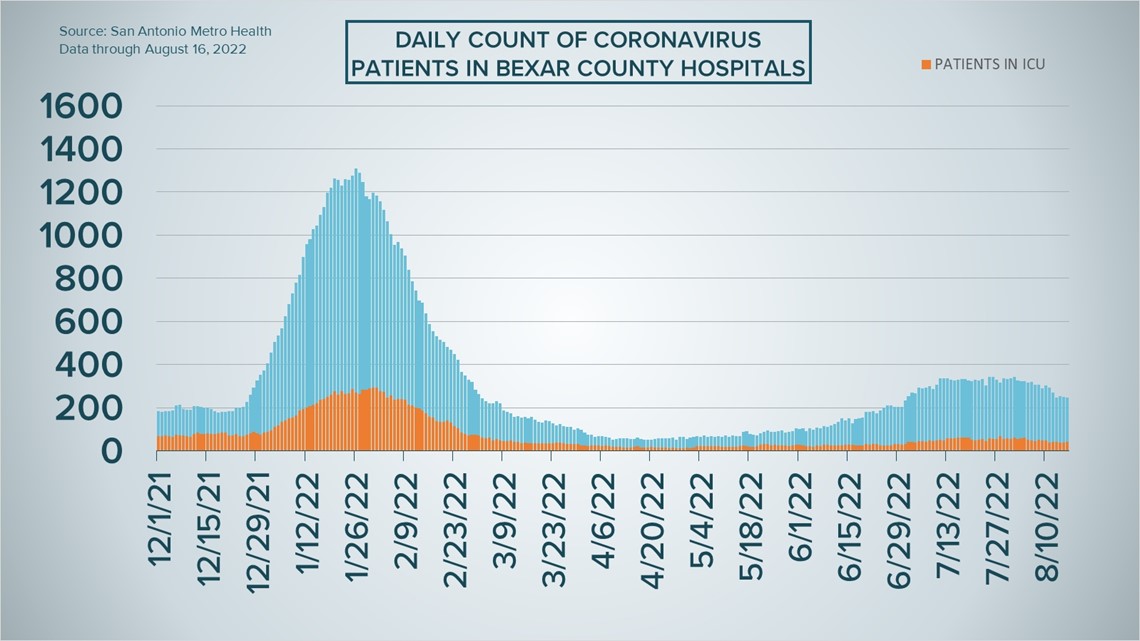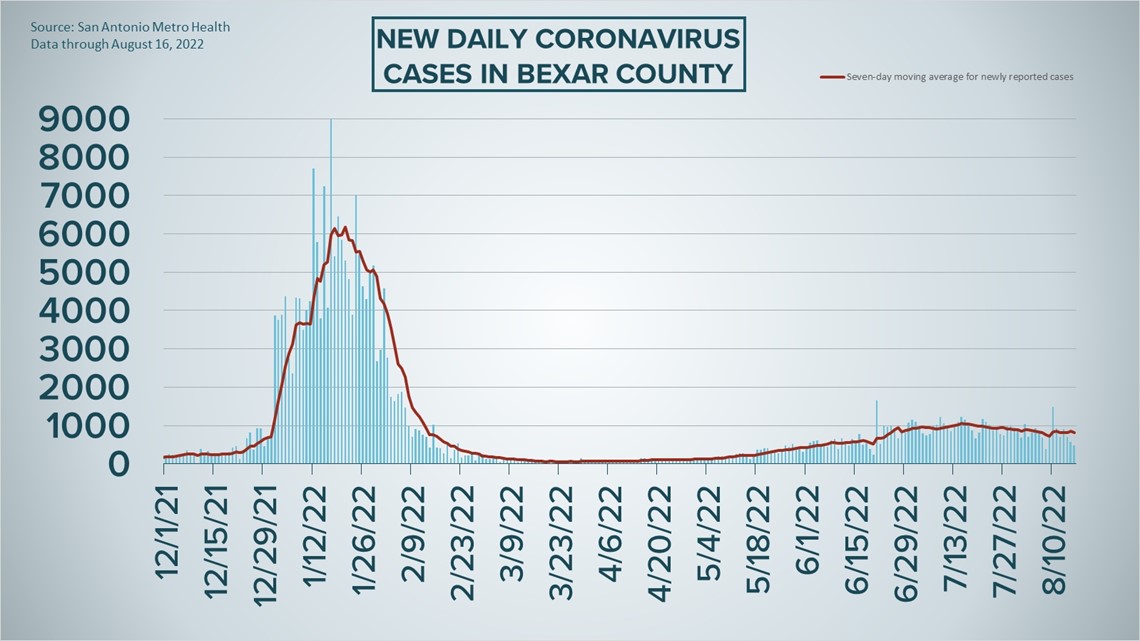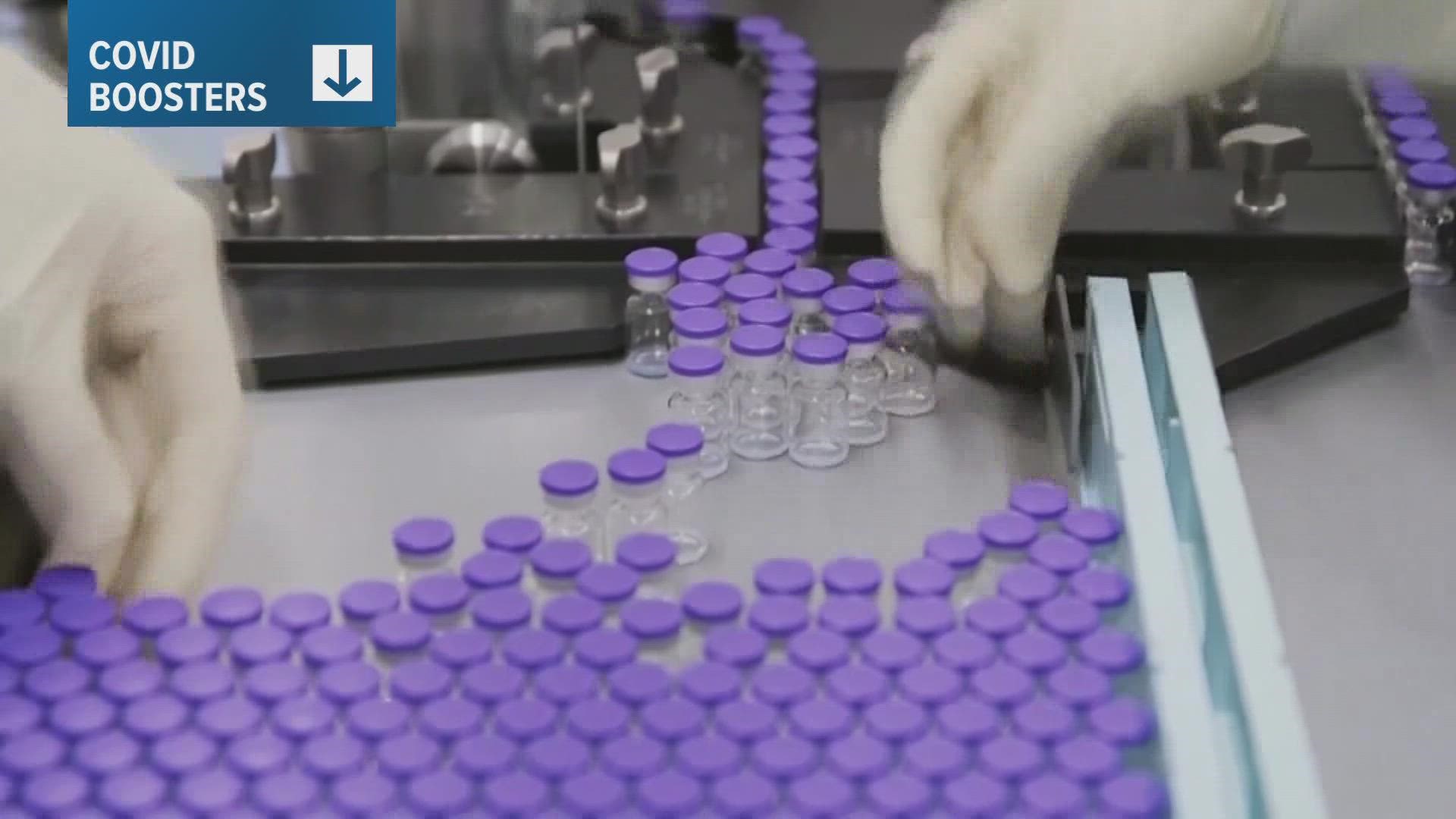SAN ANTONIO — Bexar County recorded its second-lowest COVID-19 case total over the last six weeks and hospitalizations continue to fall as August brings a recovery period from July's coronavirus wave.
With students heading back to school this week, however, it remains to be seen if those trends will continue.
Metro Health reported 482 new infections Tuesday, tugging the seven-day case average down to 823. August has averaged 781 daily cases thus far, down from the 961 daily infections reported in July.
Local COVID-19 hospitalizations, meanwhile, are down by 40% since the start of the month. On Tuesday there were 247 patients receiving treatment in local hospitals; of those, 41 are in intensive care and 12 are using ventilators.
Just under 12% of the region's hospital beds were available to take a new patient, which is one of the reasons Metro Health's coronavirus risk indicator remains at "high" but "steady" this week.
More than 617,000 COVID-19 infections have been reported in the San Antonio area since the start of the pandemic, while 5,351 Bexar County residents have lost their lives to virus complications.
How Bexar County is trending




Vaccine progress in Bexar County
The following numbers are provided by San Antonio Metro Health. A full breakdown can be found here.
- 1,462,947 eligible Bexar County residents are fully vaccinated as of August 2, which is about 71.9% of the total population over the age of 4.
- 563,173 eligible Bexar County residents have received a COVID-19 booster shot as of August 2, which is 39.9% percent of the population.
The CDC states that "when a high percentage of the community is immune to a disease (through vaccination and/or prior illness)," that community will have reached herd immunity, "making the spread of this disease from person to person unlikely."
The City of San Antonio breaks down the vaccination rates by zip code on Metro Health's Vaccination Statistics page.
Coronavirus in Texas
The total number of coronavirus cases in the state grew by 6,750 on Tuesday, according to the Texas Department of State Health Services. That total includes 4,594 new confirmed cases and 2,156 new probable cases. More details can be found on this page.
Tuesday's figures bring the total number of Texans diagnosed with COVID-19 to more than 7.61 million.
An additional 38 Texans have died from virus complications, the state reported Wednesday, raising the statewide death toll to 88,179.
Coronavirus symptoms
The symptoms of coronavirus can be similar to the flu or a bad cold. Symptoms include fever or chills, cough, shortness of breath or difficulty breathing, fatigue, muscle or body aches, headache, new loss of taste or smell sore throat, congestion or runny nose, nausea or vomiting, and diarrhea, according to the Centers for Disease Control.
Most healthy people will have mild symptoms. A study of more than 72,000 patients by the Centers for Disease Control in China showed 80 percent of the cases there were mild.
But infections can cause pneumonia, severe acute respiratory syndrome, kidney failure, and even death, according to the World Health Organization. Older people with underlying health conditions are most at risk.
Experts determined there was consistent evidence these conditions increase a person's risk, regardless of age:
- Chronic kidney disease
- COPD (chronic obstructive pulmonary disease)
- Obesity (BMI of 30 or higher)
- Immunocompromised state (weakened immune system) from solid organ transplant
- Serious heart conditions, such as heart failure, coronary artery disease, or cardiomyopathies
- Sickle cell disease
- Type 2 diabetes
- The CDC believes symptoms may appear anywhere from two to 14 days after being exposed.
Human coronaviruses are usually spread...
- Between people who are in close contact with one another (within about 6 feet).
- Through respiratory droplets produced when an infected person coughs, sneezes or talks. These droplets can land in the mouths or noses of people who are nearby or possibly be inhaled into the lungs.
- Some recent studies have suggested that COVID-19 may be spread by people who are not showing symptoms.
Help stop the spread of coronavirus
- Stay home when you are sick.
- Eat and sleep separately from your family members
- Use different utensils and dishes
- Cover your cough or sneeze with your arm, not your hand.
- If you use a tissue, throw it in the trash.
Find a testing location
City officials recommend getting a COVID-19 test if you experience fever or chills, cough, shortness of breath or difficulty breathing, fatigue, muscle or body aches, headache, new loss of taste or smell, sore throat, congestion or runny nose, nausea or vomiting, or diarrhea.
Here's a Testing Sites Locator to help you find the testing location closest to you in San Antonio.
Latest Coronavirus Headlines
- Jill Biden tests positive for COVID-19
- Back-to-school with COVID-19 variants and monkeypox outbreaks
- CDC making major changes to COVID guidelines
- Texas doctors discuss health concerns as kids head back to school
- Yes, COVID-19 vaccine boosters for omicron will be available to the public in 2022
- 'I didn't really learn anything': COVID grads face college

